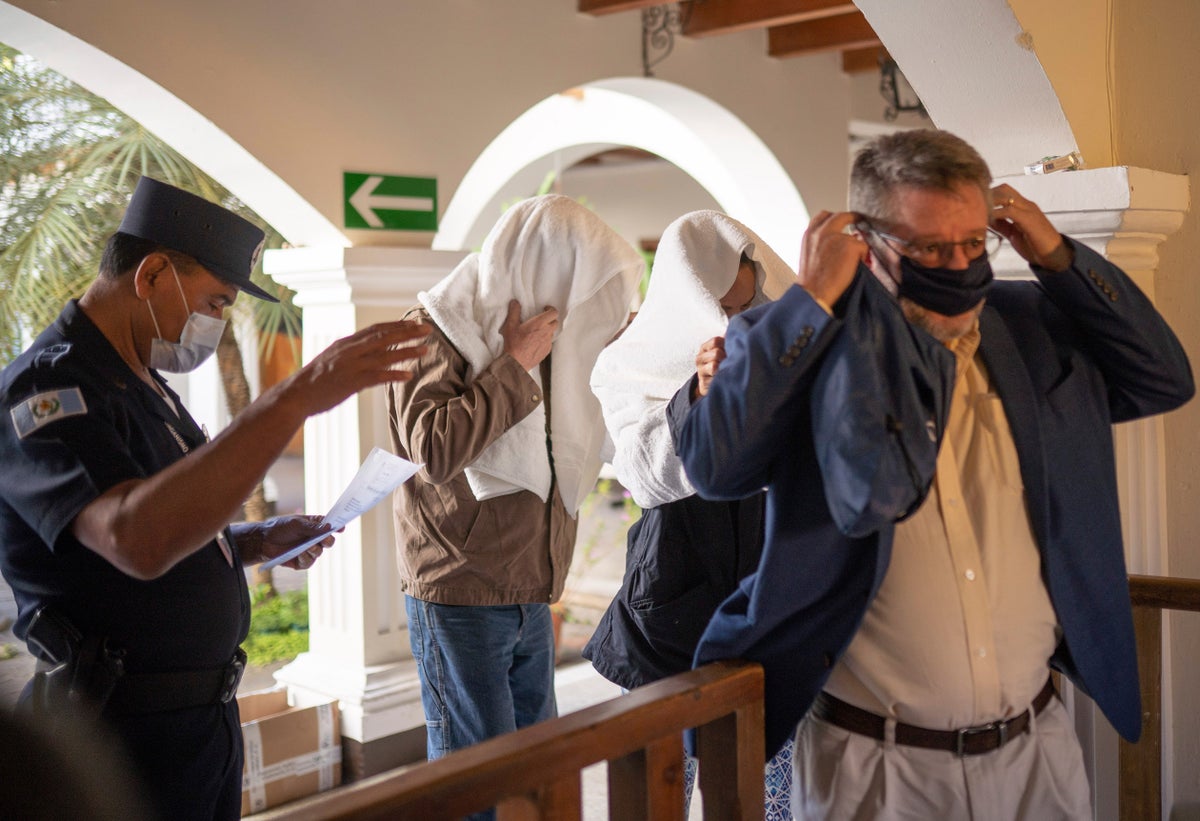
Two Americans, one a photographer and the other a connoisseur of Mayan folk art, are facing charges of smuggling pre-Hispanic artifacts in Guatemala Tuesday in a case that has roiled the normally tranquil tourist-magnet town of Antigua.
Antigua, just outside Guatemala City, is a place where visitors and expats live among centuries-old ruins of colonial buildings and soaring volcanic peaks, admiring the lively handicraft and art scene.
American Stephanie Allison Jolluck was part of that community after moving from the Atlanta, Georgia, area. She wrote on her photography website, “I am a designer and social entrepreneur who has always been fascinated by Indigenous cultures. As a lover of ethnographic art, antiques, and handicrafts, I enjoy shopping markets around the world.”
It was on one such shopping trip that she claims to have picked up two ceremonial basalt stone carvings, which she told a judge she thought were cheap souvenirs at a public market in Antigua, purportedly as a gift for her brother.
Guatemala’s Culture Ministry said the two stone carvings were made between 600 and 900 A.D. Known as Mayan “axes,” because of their shape, the carved slabs may have been associated with the sacred ball game of the Mayas, rather than have any use as an axe.
She was released on her own recognizance after her arrest at the airport because she was a long-term resident of Guatemala. But Jolluck and her American companion, Giorgio Salvador Rossilli, were detained again Sunday when they were found with 166 Mayan artifacts in their vehicle.
Rossilli is listed as an author of a two-volume work on the “Masks of Guatemalan Traditional Dances” and was credited as one of the curators of Los Angeles art exhibitions of pre-Hispanic artifacts several years ago.
Rossilli is also listed as a donor to the La Ruta Maya Foundation, which lists as its main work “the recovery of archaeological artifacts that have been illegally taken out of the country.”
After police pulled them over, Rossilli apparently argued ignorance. Prosecutor Jorge Alberto de León said the couple told a judge they thought the artifacts were cheap reproductions.
“They argued that, because they are foreigners, they cannot tell one piece from another,” de León said. “They told the judge that because they were pieces of stone they had seen sold at the markets, they never imagined that they were ancient archeological pieces.”
Guatemala’s Culture Ministry says that 90% of the 166 artifacts — mostly stone carvings — found in the couple’s vehicle are authentic. People smuggling relics and archaeological artifacts face between 5 and 10 years in jail if convicted in Guatemala.
De León said Rossilli also argued the pieces weren't his, and that he had been given them by someone else to restore, and that he was returning them when he was detained. Why someone would want to restore fakes was unanswered.
Court secretary Milton Benítez said a local architect, Franklin Contreras, has claimed the pieces belonged to him. Private citizens can hold such artifacts in Guatemala as long as they prove they weren't looted from ruin sites and register them with the government.
On Monday, Judge Sherly Figueroa released both Jolluck and Rossilli on bail of about $6,400 apiece and allowed them to keep their passports but prohibited them from leaving the country. They will be required to show up at prosecutors' offices every two weeks as their case continues.
Jolluck's lawyer, Juan Carlos Velasquez, refused to discuss the case with journalists, saying ,“I don't litigate in the media.”
The expat community in Antigua and greater Guatemala seemed somewhat divided on the arrests.
In an expat Facebook group, many warned against a rush to judgement, noting it would take an impartial investigation to determine whether the pieces were in fact genuine.
Antigua resident Ivan Borja said. “From the people I've talked to in the expat community, the news was a shocker.”







